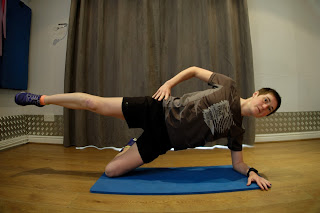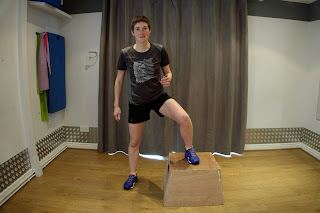"Stress biology is concerned with the physiological mechanisms and behavioural strategies that enable organisms to survive or maintain homeostasis” “Pains prime adaptive purpose is to powerfully motivate the organism to alter behaviour in order to aid recovery and survive”
(Gifford 1998)
This blog is an appendix to the previous three blogs on pain response and sensitisation. It is intended to give some more detailed background on how the brain in particular manages pain.
Part 1: How our Tissue Responds to Pain
Part 2: Amplifying Pain - Central Sensitisation
Pain 3: Shark Attack, It's all in the Mind
The basic function of pain is:
- To protect you.
- To alert you to danger - often before you are injured or badly hurt.
- To makes you move and think differently
- VITAL for healing
Input / stimulus (the nerve endings in tissue) => process and evaluate (the spinal cord and brain) => output / response (the whole body). “We need a system that is able to monitor health of organisms own body and provide appropriate recovery response if damage occurs” (Gifford 1) Is Pain is all in your mind? Well, yes. The following areas of the brain are involved in evaluating pain inputs and formulating responses:
- area for organising and preparing movement.
- area for concentration and focus.
- area for problem solving and memory.
- fear, fear conditioning and addiction area.
- sensory discrimination area.
- area for stress response, autonomic regulation and motivation.
- movement and cognition area.
- The Sympathetic nervous system - this increases heart rate, mobilises energy stores ready for movement and releases adrenaline into the body.
- The Motor (muscle) system is very important e.g. remove limb from flame, limp, run away, hide, prevent movement of area under threat. As we have seen, one problem is once trained the body tends to maintain these patterns after the stimulus has gone.
- The Pain system itself - this lets you know what is going on i.e. you feel pain
- The Endocrine system - Mobilises energy stores and suppresses any processes that are not vital to save energy (growth, repair processes, inhibition of inflammation, and inhibition of the immune system)
- The Immune system - responds later and fights invaders, sensitises neurones, makes us sleepy to promote healing.
- The Parasympathetic system - also responds later, it nourishes cells and heals tissue.
These systems are designed to work really hard for short periods in a threatening situation. They are the same systems that are activated when your body is under acute stress and are responsible to flight / fight responses. In the same way that prolonged stress which maintains long term activity in these systems is is undesirable, pain for a prolonged time causes sustained activity in these systems which causes over-sensitisation.
Persistent, chronic pain:
All pain is real but some pain persists after healing has occurred. This is termed persistent pain or chronic pain. In these situations the brain concludes that a threat remains and you still need protection. The brain can experience similar sensitisation to that described for the spinal chord in blog #2. The pain ignition nodes in the brain increase their sensitivity so less stimulus from the spinal cord activates them. They can even start firing with no stimulus from the spinal cord. The brain also creates more sensors in the pain ignition nodes and produces more chemicals to activate the sensors. This can be particularly powerful when it occurs in the part of the brain that deals with memory - you can relive the pain even though there is no danger to respond to. For example people with whiplash can feel pain when the car ahead stops even though they are not themselves stopping suddenly. The brain areas devoted to different body parts or functions start to overlap making you sensitised to pain in different areas of the body to where the stimulus originally occurred. This is conceptually similar to the chemical flooding of the dorsal horns in the spinal cord. The longer the pain persists the more advance these changes become. When the brain is sensitised it's not just pain that is persistently produced. Other protective systems also increase their sensitivity:- The Sympathetic Nervous System makes you more aware and vigilant - as if you have turned a CCTV onto your body.
- The Endocrine system directs more energy to muscles for flight or fight.
- The Motor system keeps muscles constantly activated ready for fight or flight.
These systems then send signals to the brain in a self-perpetuating feedback loop. With a sensitive system inputs unrelated to tissue damage are judged as dangerous and can cause pain. You won’t know there is no damage or that its just your brain decided dangerous. It just hurts. Your thoughts are real. Real chemicals are released and real nerve impulses occur. Thought processes alone are powerful enough to maintain a pain state.
Altered muscle activity:
When you are in pain your brain alters your muscles activity. With pain being a warning sign for danger your body firstly increases activation of muscles to ready you to take action - flight or fight. This reaction is to aid protection of the whole body from further threat.
It also changes how your muscles work to help protect the local tissue where the pain is top prevent further damage. These changes cause bracing / splinting of the area by increasing the tension of muscles around the pain, and altering the movement of the whole area to reduce the load on the painful area (such as limping, or grasping the area). This works through taking load off the injured tissue by putting more load through surrounding tissue.
In the short-term these are all a positive strategy by your brain to protect your body. In the long term it becomes a hindrance not a help.
Long term over-activation of these muscles makes them feel stiff and tight. This tightness can then change how you use other muscles. Smaller muscles who's role is to control and stabilise stop working as effectively as they perceive the larger muscles to be doing their job.
This altered muscle activity will then change how you move, feel and hold yourself.
 |
So in rehabilitating any injury you need to address these changes in muscle activity. This is done with traditionally stretches and strengthening activities as well identifying and addressing threats and fears that are making your muscle system work so hard to protect you.
References
Gifford L, (1998) Topical Issues in Pain 1. Physiotherapy pain Association
Butler D.S, Moseley L.G (2013) Explain Pain, Noigroup Publications.
Mense S, Gerwin R D, (2010) Muscle Pain - Understanding the mechanisms, Springer
Melzack R, Wal P.D (2008) The Challenge of Pain, Penguin Books.
Mense S, Gerwin R D, (2010) Muscle Pain - Understanding the mechanisms, Springer
Melzack R, Wal P.D (2008) The Challenge of Pain, Penguin Books.



















